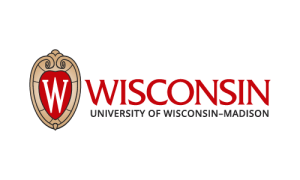UNIVERSITY of WISCONSIN–MADISON: UW-Madison engineering talent critical to state, national economic progress
The UW-Madison College of Engineering’s graduates boost Wisconsin’s economy with their know-how in manufacturing, health care, construction, highways, energy infrastructure, digital infrastructure and more. The college hopes to meet the growing demand for engineering graduates with a new state-of-the-art building that would allow it to expand enrollment. Read more here. You can’t stop a Badger.
Many of Wisconsin’s most notable companies have grown from family businesses founded decades ago into multibillion-dollar companies with an international reach—and engineers drive the innovations that underlie their progress, global competitiveness and economic success.
“Engineers are a multiplier in the workforce,” says Todd Kelsey, CEO of Plexus, a global company specializing in highly complex design, manufacturing, supply chain and aftermarket services based in Neenah, Wisconsin. “They create things, and by creating things, they create jobs. Engineering is critical to make our economy grow.”
Beyond manufactured goods, engineers also play a major role in virtually every aspect of our daily lives. They design our transportation systems, buildings, water supplies, and energy infrastructure. They enable all aspects of our digital infrastructure, from smartphones to 5G wireless networks to the cloud—and they create systems to keep our data secure. In healthcare, engineers pioneer solutions for diagnosing and treating disease or improving the way in which patients receive care.
University of Wisconsin–Madison engineers are critical to all of these efforts, says Ian Robertson, Grainger Dean of the College of Engineering. “When you think of the grand challenges the state of Wisconsin, the nation, and our society are facing—clean energy, clean water, next-generation transportation, cybersecurity, healthcare and many more—our students and our faculty are working in all of those areas,” he says.
First-year mechanical engineering students work on a project to design and build semi-autonomous trolley cars. UW-MADISON COLLEGE OF ENGINEERING
In the workforce, UW–Madison engineers make a big impact around the world—but also close to home: Each year, approximately 700 engineering bachelor’s degree recipients take positions with small, medium and large companies in the Midwest. And not only do they work in the region, a third (almost 17,000) of all UW–Madison engineering alumni reside in one of Wisconsin’s 72 counties.
The College of Engineering annually enrolls 4,500 undergraduate and 1,500 graduate students; each year, approximately 1,500 students earn engineering degrees.
Yet, industry demand for engineers is outpacing the supply. “We can’t grow our company without continuing to innovate and develop new technologies, and we need more UW–Madison engineers coming in to help us do that,” says John Pfeifer, president and CEO of Oshkosh Corporation.
As of April 2021, there were nearly 9,400 full-time engineering jobs posted in Handshake, UW–Madison’s online career management system, and Wisconsin occupational employment projections show a 7.77% increase in engineering jobs from 2018-2028. “Every company I meet with in Wisconsin tells me, ‘We want more Badger engineers,’” says Robertson.
Engineering students in the classroom. A planned new building is a critical starting point in the college’s ability to provide a hands-on education to many more engineering students and help keep pace with industry growth. UW-MADISON COLLEGE OF ENGINEERING
Plexus is among those employers seeking to grow its engineering workforce, which in Wisconsin includes 350 engineers. “Over the last five years, we’ve hired well over 100 engineers,” says Kelsey.
Not only do companies want more UW–Madison engineers, but they also prioritize recruiting at the university, says John Archambault, assistant dean for engineering student development and director of the Engineering Career Services office at UW–Madison. “Employers say we are at the top of their recruiting lists because of our national ranking and our reputation for high-quality students with demonstrated leadership skills and a strong work ethic,” he says. “They see these attributes not only in our graduates, but in our alumni already working in their organizations.”
Archambault says the college’s rigorous curriculum helps students become innovative problem-solvers, while hands-on design and capstone courses allow them to apply their engineering training to real challenges. Additionally, more than 80% of students participate in one or more internships or co-operative work terms. “As a result, they already have on-the-job experience are ready to step into a professional role,” he says.
Their depth of preparation also means that UW–Madison engineering bachelor’s degree recipients command starting salaries generally higher than the national average.
Admission to the College of Engineering is extremely competitive, says Robertson.
“Each year, some-7,000 talented students apply to UW–Madison with a desire to become engineering undergraduates,” he says. “Our college can admit only about 1,000. That capacity is limited by the space and the facilities we have available, as well as the number of faculty and staff we have to educate our students.”
In contrast to UW–Madison’s overall undergraduate engineering enrollment of 4,500, competitor universities such as Purdue, Illinois, Penn State, Ohio State, Michigan State and Michigan have engineering undergraduate student body sizes ranging from 6,000 to nearly 9,500 students. Those engineering colleges also recently have dedicated new state-of-the-art “signature” engineering buildings.
With an ambitious plan to enroll 1,400 additional students each year — bringing the total annual number of engineering graduates to more than 2,000 — Robertson says the UW–Madison College of Engineering needs to follow suit. “We need to grow not only to meet student and employer demand, but also to remain attractive to them. If we want to continue to recruit the best talent — and that means at the faculty, staff and student level — we need facilities that are comparable to our peers,” he says.
A planned new building is a critical starting point in the college’s ability to provide a hands-on education to many more engineering students and help keep pace with industry growth. Designed for construction in two phases, the building will be funded equally through state and gift support. It will provide the college much-needed space to accept additional students, recruit and retain top-tier faculty members to educate them, and to sustain its excellence in research and graduate education.

